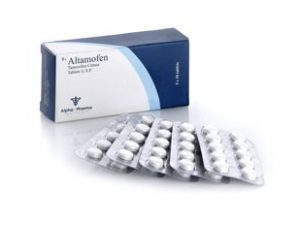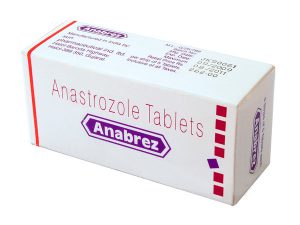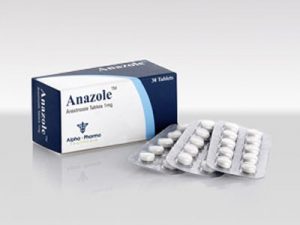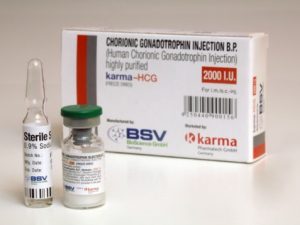Steroid Use in Professional Sports: What You Need to Know
Introduction
Steroid use in professional sports has been a contentious issue for decades, captivating the attention of sports enthusiasts, athletes, and policymakers alike. Steroids, or performance-enhancing drugs (PEDs), have become synonymous with the pursuit of excellence in the competitive sports arena. This topic raises ethical, health, and legal concerns that have spurred numerous debates and controversies. This comprehensive exploration aims to delve into the various facets of steroid use in professional sports, shedding light on its history, ethical implications, health risks, and the ongoing efforts to regulate and combat its prevalence.
Historical Context
The use of performance-enhancing substances dates back to ancient times when athletes in ancient Greece and Rome sought ways to gain a competitive edge. However, the modern era witnessed a significant surge in steroid use, particularly during the mid-20th century. The discovery and synthesis of anabolic steroids in the 1930s marked a turning point, as these substances promised rapid muscle growth and enhanced athletic performance. By the 1950s and 1960s, athletes, including those in professional sports, began experimenting with these drugs.
Ethical Dilemmas
The ethical implications surrounding steroid use in professional sports are multifaceted. Critics argue that the use of steroids goes against the principles of fair play and undermines the spirit of competition. Athletes are expected to compete on a level playing field, where success is determined by skill, dedication, and natural talent. The use of performance-enhancing drugs is seen as a violation of this fundamental ethos, creating an uneven playing field and compromising the integrity of sports.
On the other hand, some argue that athletes face immense pressure to perform at the highest level, and the temptation to use steroids may be driven by the desire to meet these expectations. The pressure to succeed, coupled with lucrative financial incentives and the pursuit of glory, creates an environment where athletes may rationalize the use of steroids as a means to stay competitive.
The debate over the ethical dimensions of steroid use also extends to issues of personal autonomy. Should athletes have the right to make decisions about their bodies, including the use of substances that may enhance their performance? Striking a balance between safeguarding the principles of fair play and respecting individual autonomy is a complex challenge that sports organizations and governing bodies grapple with.
Health Risks and Consequences
The health risks associated with steroid use in professional sports are a major concern for athletes, medical professionals, and sports organizations. Anabolic steroids, when used inappropriately or in excessive amounts, can lead to a range of adverse effects on the body. These include cardiovascular issues such as high blood pressure and increased risk of heart disease, liver damage, hormonal imbalances, and psychological effects such as mood swings and aggression.
Moreover, the long-term consequences of steroid use are still not fully understood, and ongoing research aims to uncover potential health risks that may emerge over time. Athletes who engage in the prolonged use of steroids may face a higher likelihood of developing chronic health conditions that can impact their overall well-being and quality of life.
The pressure to achieve immediate and extraordinary results may lead athletes to engage in “stacking” or “cycling,” practices where multiple types of steroids are used simultaneously or in succession. These approaches, while intended to maximize benefits, can significantly amplify the associated health risks. Sports organizations and medical professionals are actively involved in educating athletes about the potential dangers of steroid use and advocating for responsible and monitored training regimens.
Regulation and Anti-Doping Measures
To address the challenges posed by steroid use in professional sports, governing bodies and sports organizations have implemented rigorous anti-doping measures. The World Anti-Doping Agency (WADA) plays a central role in coordinating efforts to combat doping in sports on a global scale. WADA establishes the World Anti-Doping Code, a set of rules and regulations that guide anti-doping efforts across various sports.
Drug testing is a cornerstone of anti-doping measures, with athletes subjected to random testing to detect the presence of banned substances in their system. The list of prohibited substances is regularly updated to stay ahead of emerging doping trends. Athletes who test positive for banned substances face sanctions, including suspension, fines, and disqualification from competitions.
Despite these efforts, the cat-and-mouse game between athletes and anti-doping authorities continues. The quest for new, undetectable substances and sophisticated doping methods challenges the effectiveness of current anti-doping strategies. As technology and scientific knowledge advance, anti-doping agencies must continually adapt and enhance their methods to maintain the integrity of sports.
Impact on Athlete Careers
The consequences of steroid use in professional sports extend beyond health risks and ethical debates; they also have a profound impact on athletes’ careers. Athletes who are caught using performance-enhancing drugs may face not only suspensions and fines but also irreparable damage to their reputations. The stain of a doping scandal can cast a long shadow over an athlete’s legacy, affecting endorsements, sponsorships, and future opportunities in the sports industry.
Some argue that the punitive measures taken against athletes caught using steroids are essential to deter others from engaging in similar practices. However, others believe in the possibility of redemption and rehabilitation, advocating for more nuanced approaches that consider factors such as intent, transparency, and cooperation during investigations.
The Role of Sports Organizations and Education
Addressing the issue of steroid use in professional sports requires a comprehensive approach that involves not only punitive measures but also proactive efforts by sports organizations to educate athletes and promote a culture of clean competition. Educational programs aimed at both athletes and coaches can play a crucial role in preventing steroid use by raising awareness about the risks, ethical considerations, and the importance of fair play.
Sports organizations also have a responsibility to create environments that prioritize the well-being of athletes and discourage the use of shortcuts to success. Implementing policies that emphasize the development of talent, sportsmanship, and ethical conduct can contribute to fostering a culture where the use of performance-enhancing drugs is not only discouraged but actively rejected.
Public Perception and Media Influence
The media plays a significant role in shaping public perception and discourse surrounding steroid use in professional sports. High-profile doping scandals often make headlines, drawing attention to the darker side of athletics. Media coverage can influence public opinion, contributing to the stigmatization of athletes involved in doping and shaping narratives that either condemn or sympathize with them.
It is essential for media outlets to approach these issues with sensitivity and accuracy, avoiding sensationalism that may oversimplify the complexities of steroid use in professional sports. Responsible journalism can contribute to a more nuanced understanding of the factors that drive athletes to consider or succumb to the temptation of using performance-enhancing drugs.
Conclusion
Steroid use in professional sports remains a complex and multifaceted issue that intertwines ethical, health, and legal considerations. The pursuit of excellence in sports, combined with the pressures of competition, financial incentives, and the quest for glory, creates an environment where athletes may be tempted to use steroids to gain a competitive edge. Balancing the principles of fair play with the autonomy of athletes poses an ongoing challenge for sports organizations and governing bodies.
The health risks associated with steroid use underscore the importance of comprehensive anti-doping measures and education programs. While drug testing remains a critical component of these efforts, a holistic approach that addresses the root causes of doping, promotes ethical conduct, and prioritizes athlete well-being is essential.
The ever-evolving landscape of sports, along with advances in technology and scientific knowledge, necessitates continuous adaptation and improvement of anti-doping strategies. Moreover, fostering a culture of clean competition and ethical behavior requires collaboration among athletes, coaches, sports organizations, and the media.
As discussions surrounding steroid use in professional sports continue, it is crucial to consider the broader context of the sports industry, the pressures faced by athletes, and the societal expectations placed upon them. By addressing the underlying factors that contribute to doping, stakeholders in the world of sports can work together to create an environment that upholds the principles of fair play, integrity, and the well-being of athletes.





